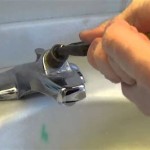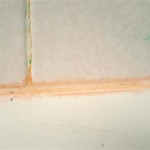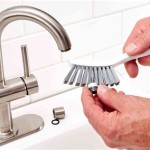How to Remove Mould From Walls in a Bathroom
Mould, a common problem in bathrooms due to high humidity and moisture levels, can affect the aesthetics and health of a home. Its presence can trigger allergies and respiratory issues, making it crucial to address promptly. While it may seem daunting, removing mould from bathroom walls is a manageable task with the right approach and materials. This article provides a step-by-step guide to effectively eliminate mould and prevent its recurrence.
Understanding Mould Growth
Mould thrives in damp environments, feeding off organic matter like drywall, wood, and even grout. It spreads by releasing spores into the air, which can land on other surfaces and start new colonies. The most common types of mould found in bathrooms are black mould (Stachybotrys chartarum) and white mould (Cladosporium), both known for their potential health risks. To prevent its growth, it is essential to address the root cause of the moisture problem. This may involve improving ventilation, fixing leaks, and ensuring proper air circulation.
Preparing for Mould Removal
Before commencing the removal process, it's crucial to protect yourself from exposure to mould spores. Wear a respirator mask, gloves, and eye protection. Open windows for ventilation and cover furniture and belongings in the area with drop cloths or plastic sheeting to prevent contamination. Ensure proper lighting and access to water and power sources for the cleaning process. If the mould infestation is extensive, consider contacting a professional mould remediation specialist.
Step-by-Step Mould Removal Process
The following steps outline the efficient removal of mould from bathroom walls:
1. Clean and Dry the Affected Area
Start by removing any loose mould with a scraper or a brush. Vacuum the area thoroughly, using a HEPA filter vacuum to capture spores effectively. Clean the affected surface with a mild detergent solution. For stubborn mould, use a baking soda paste or a commercial mould remover, following the manufacturer's instructions. Ensure the surface is completely dry after cleaning. This step is crucial in removing the visible mould and spores, preventing their re-growth.
2. Treat the Mould Growth
Apply a mould-killing solution to the affected area. Commonly used products include bleach, hydrogen peroxide, tea tree oil, or commercial mould removers. Mix the solution according to the manufacturer's instructions and apply it liberally to the surface. Allow it to sit for the recommended time before rinsing it off thoroughly with clean water. This step eliminates the remaining mould spores and prevents their spread.
3. Prevent Recurrence
After removing the mould, it's vital to address the underlying cause to prevent its recurrence. This may involve improving ventilation by installing exhaust fans, repairing leaks, and ensuring proper air circulation. If the mould is recurring in the same spot, consider replacing the affected material, such as drywall or grout, to eliminate the source of the problem. Regular cleaning and maintenance are also crucial in preventing future mould growth.
Additional Tips for Mould Removal
Here are a few additional tips for successful mould removal:
- Ventilation: Ensure adequate ventilation in the bathroom by using exhaust fans during and after showering. Open windows when possible to allow fresh air circulation.
- Dehumidifier: Consider using a dehumidifier to reduce humidity levels in the air, making it less hospitable for mould growth.
- Shower Curtains: Regularly clean and replace shower curtains to prevent mould build-up.
- Grout: Regularly clean and seal grout to prevent water penetration and mould growth.
- Professional Help: If the mould infestation is extensive, consider contacting a professional mould remediation specialist for expert assistance.
By following these steps and taking proactive measures, you can effectively remove mould from your bathroom walls and prevent its recurrence. Remember, addressing the root cause of the moisture problem is crucial for long-term mould prevention. If you have any concerns about your health or the extent of the mould infestation, consult with a healthcare professional or a qualified mould remediation specialist.

How To Remove Mold From Walls True Value

How To Get Rid Of Mold In The Shower On Bathroom Walls Clorox

How Do You Get Rid Of Mould On Bathroom Walls Igloo Surfaces

How To Get Rid Of Mold In Bathroom 2024 Tips From Puroclean

How To Remove Mould Before Painting Bella Bathrooms Blog

Kill Bathroom Mould Without Bleach Electrodry Blogs

How To Clean Black Spots In The Bathroom Family Handyman

Bathroom Ceiling Mold Removal When To Clean Call Branch Environmental

The Ultimate Guide On How To Clean And Get Rid Of Mold Pro Housekeepers

The Ultimate Guide On How To Clean And Get Rid Of Mold Pro Housekeepers
Related Posts







